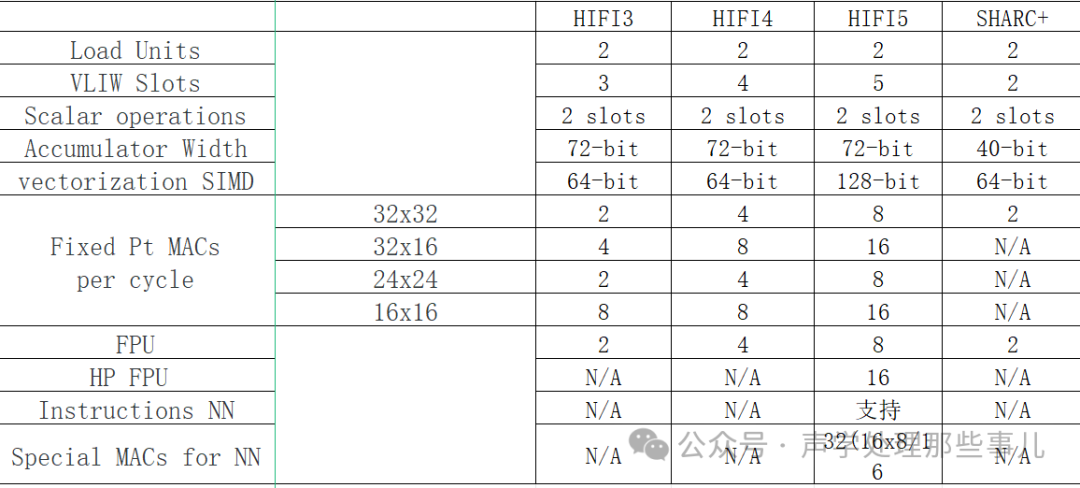When it comes to audio, DSP chips cannot be overlooked. As chips specifically designed for audio processing, the main focuses of people on them are as follows:
1 Hardware resources
2 Computing power resources MIPS
3 Memory
4. Fixed-point floating-point calculation
5 DSP Ecosystem
1 Hardware resources
The number of TDM ports
Nowadays, with the popularization of pure booster solutions in vehicles, the audio solutions in the main unit are becoming increasingly complex, and more and more peripheral devices are connected, such as ADC/AMP/A2B/BT/Tuner. Among them, the number of ADC/A2B ports should be two or three. Based on current experience, the more TDM ports there are, the better, with a minimum of seven or more
b ASRC
ASRC is mainly used in cases where the Clock is not synchronized. Currently, SOCs and DSPS basically have two Audio Clock sources, so ASRC needs to be added for clock synchronization. However, with the popularization of multi-channel solutions such as 7.1.4, the demand for ASRC channels is also increasing
c SPI/GPIO/IIC, etc
Nowadays, DSPS are basically started from flash, and flash also stores audio source files and parameters. Moreover, in some schemes, the MCU and SOC can control the DSP simultaneously. Therefore, the SPI interface requires at least two or even three GPIOs for status notification, such as Clip and DSP initialization status, etc
2. Computing power resources
Apart from hardware, the most important part of DSP is DSP IP. The widely used ones are Cadence HIFI and ADI SHARC series. In addition, there are TI DSP and Qualcomm Hexagon DSP
Now let's make a rough comparison between HIFI and SHARC:

Often, MIPS is used for comparison, but in reality, MIPS for different ips cannot be unified. Generally, there are two ways to make comparisons here
1. Use MACs for comparison
Write 256, 512, and 1024 FIRS and run them on different DSPS respectively. Make comparisons based on the actual test results
3 Memory
Nowadays, DSPS basically allocate L1/L2 memory. L1 memory is slightly smaller, but the DSP core has a faster access speed. L2 memory is larger, but the DSP core has a slower access speed. When evaluating here, it is necessary to superimpose and evaluate based on the memory used by the actual integrated algorithm
4. Fixed-point floating-point calculation
HIFI3/Qcom Hexagon DSP is a fixed-point DSP. Its fixed-point processing is more efficient than floating-point processing. Therefore, when writing algorithms, it is necessary to perform fixed-point processing of the algorithm according to the relevant instruction set, which brings difficulty to algorithm development. HIFi4/5/SHARC supports floating-point, which is the first choice for algorithm engineers
5 DSP Ecosystem
Using a DSP is not just about the DSP itself. In fact, it also requires the manufacturer to provide a complete set of mature development tools and related audio link design tools, supporting rapid algorithm integration and implementation, open source, etc. This poses challenges for domestic products. However, domestic products are now catching up, and there are several companies in the industry that have done well. I hope that more and more of them will be used in the future. This way, the selectivity in design will be enhanced
Finally, I hope domestic products will become stronger and stronger
免责声明: 本文章转自其它平台,并不代表本站观点及立场。若有侵权或异议,请联系我们删除。谢谢!
Disclaimer: This article is reproduced from other platforms and does not represent the views or positions of this website. If there is any infringement or objection, please contact us to delete it. thank you!
矽源特科技ChipSourceTek


